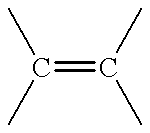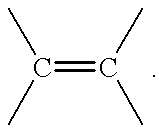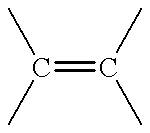Thermosettable pressure sensitive adhesive
a thermosettable and pressure-sensitive adhesive technology, applied in the field of photopolymerizable precursors of thermosettable pressure-sensitive adhesives, can solve the problems of not meeting all practical requirements to a sufficient and/or desirable degree, the cure temperature reported in the above references was too high to allow application, and the mechanical properties of thermoset adhesives are not always sufficient and/or desirable, etc. , to achieve the effect of good adhesion, low energy surface and low energy surfa
- Summary
- Abstract
- Description
- Claims
- Application Information
AI Technical Summary
Benefits of technology
Problems solved by technology
Method used
Image
Examples
example 1
[0193] Isobornyl acrylate (23% by weight) and phenoxy ethyl acrylate (15% by weight) were combined with 0.04 pph Irgacure 651 photoinitiator and stirred until the photoinitiator was dissolved. This mixture was then purged with nitrogen and partially polymerized using UV radiation so that about 4-10% polymer was present, as described in U.S. Pat. No. 4,181,752, thus forming a partially polymerized, coatable syrup. The polymerization was stopped by removing the light source.
[0194] An additional portion (0.16 pph) of Irgacure 651 photoinitiator was then added, as well as 0.1 pph 1,6-hexanediol diacrylate (HDDA) crosslinker.
[0195] Then 42% by weight of DER 331 and 20% by weight of A2337XS were added and the mixture was mixed mechanically for 36 hours or until homogeneous.
[0196] The viscous mixture was then coated onto a 40 micron transparent silicone-coated polyester liner to a thickness of 500 microns using a knife coater and coated with a second transparent silicone-coated polyester l...
examples 16-21
[0204] Acrylic monomers as listed in Table 4 were combined with 0.2 pph Irgacure 651 photoinitiator, 0.1 pph 1,6-hexanediol diacrylate (HDDA) and stirred until the photoinitiator was dissolved. Epoxy resins, hardener compounds, fillers and polymers were added sequentially in the amounts given in Table 4, and stirred mechanically until the mixture was homogeneous.
[0205] No prepolymerization to a syrup was necessary in this case, as a coatable viscosity was inherently present.
[0206] Onset temperature of the epoxy curing reaction, 900 peel adhesion and overlap shear strength were measured for the adhesives of Examples 16-20 as described above. The onset temperatures of Examples 16-21 were 70-73.degree. C. The other results are summarized in Table 5.
[0207] A layer of the photopolymerized, thermosettable adhesive of Example 21 with a thickness of 500 .mu.m was applied to a steel mounting bracket having a flat plate (dimensions of 1.times.16.times.23 mm) and adhered to polycarbonate or po...
examples 22-24
[0211] Acrylic monomers as listed in Table 8 were combined with 0.04 pph of Irgacure 651 photoinitiator. The mixture was purged with nitrogen for 30 minutes and then exposed to low intensity ultraviolet radiation as described in Example 1 until a low viscosity syrup was obtained. To this syrup were added in the amounts listed in Table 8: N-vinyl caprolactam (NVC), epoxy resin, 0.1 pph crosslinker HDDA, 0.16 pph additional photoinitiator Irgacure 651, epoxy hardener. The mixture was stirred until homogeneous.
[0212] Onset temperature of the epoxy curing reaction, 90.degree. peel adhesion of the thermally-uncured adhesive and dynamic shear strength of the thermally-cured adhesive was measured as described above. The results are summarized in Table 9.
PUM
| Property | Measurement | Unit |
|---|---|---|
| onset temperature | aaaaa | aaaaa |
| shear strength | aaaaa | aaaaa |
| temperature | aaaaa | aaaaa |
Abstract
Description
Claims
Application Information
 Login to View More
Login to View More - R&D
- Intellectual Property
- Life Sciences
- Materials
- Tech Scout
- Unparalleled Data Quality
- Higher Quality Content
- 60% Fewer Hallucinations
Browse by: Latest US Patents, China's latest patents, Technical Efficacy Thesaurus, Application Domain, Technology Topic, Popular Technical Reports.
© 2025 PatSnap. All rights reserved.Legal|Privacy policy|Modern Slavery Act Transparency Statement|Sitemap|About US| Contact US: help@patsnap.com



